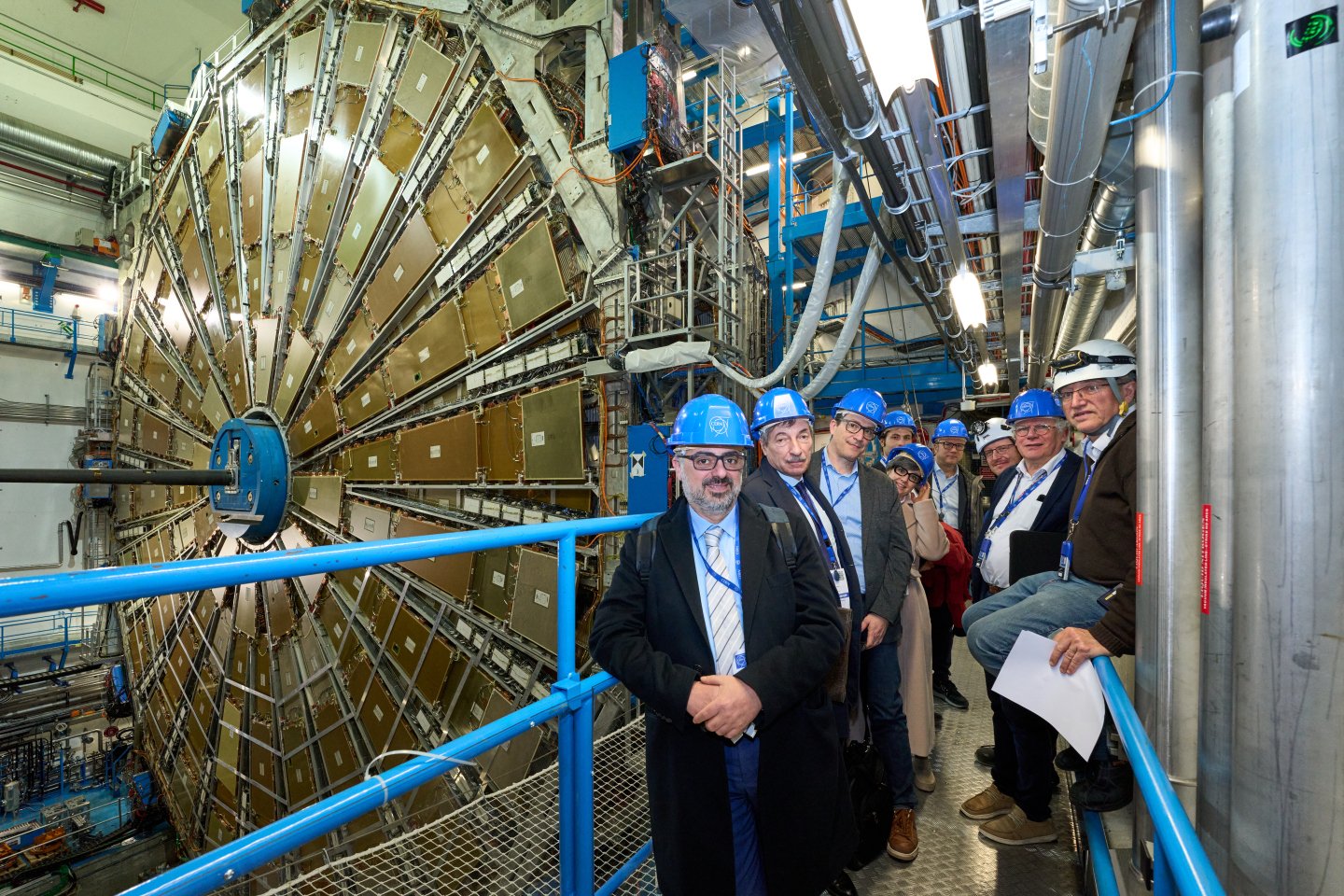
The delegation from ENEA visited the ATLAS experimental cavern during the collaboration kick-off meeting at CERN in February. (Image: CERN)
CERN has established a partnership with ENEA, the Italian National Agency for New Technologies, Energy and Sustainable Economic Development, to develop new beam-intercepting devices using liquid-lead technologies.
This development could enhance the performance and reliability of particle accelerators worldwide and is essential for proposed future projects at CERN, such as the Future Circular Collider (FCC) and Muon Collider. FCC-ee collisions of intense electron and positron beams would produce a high-energy photon beam carrying up to 500 kW of power on each side of the interaction regions; liquid lead is an excellent and compact candidate to safely absorb this photon beam. The Muon Collider would need proton beams to interact with a target to supply muons. If the target was solid graphite, proton beams would be limited to 2 MW of power; a liquid-lead target, however, would be able to withstand more powerful proton beams and hence produce more muons. Looking at the intensity frontier, liquid-lead targets could also be applied to the production of neutrons and feebly interacting particles.
"By pooling our resources and expertise, we are confident that we can accelerate the development of liquid-metal-based beam-intercepting devices", explains Marco Calviani, Head of the Target, Collimators and Dumps section at CERN. "This collaboration will unlock an enabling technology for new possibilities in fundamental research, applied science and applications for the benefit of society."
"Together with CERN, we are well positioned to use our know-how of liquid-lead-based technology to push the boundaries of innovation and pave the way for transformative advancements in accelerator technology," continues Mariano Tarantino, Head of the Nuclear Energy Systems Division at ENEA.






